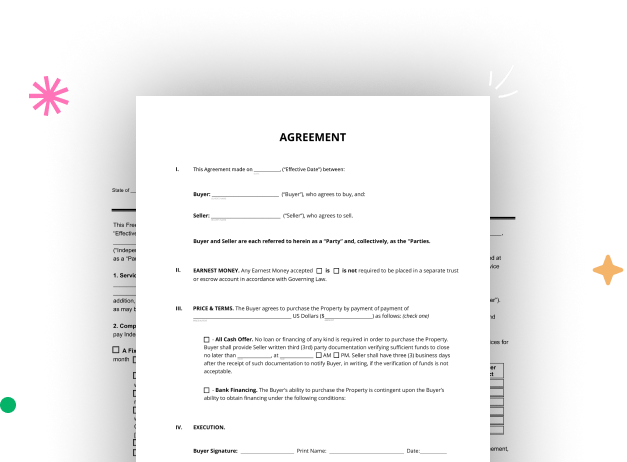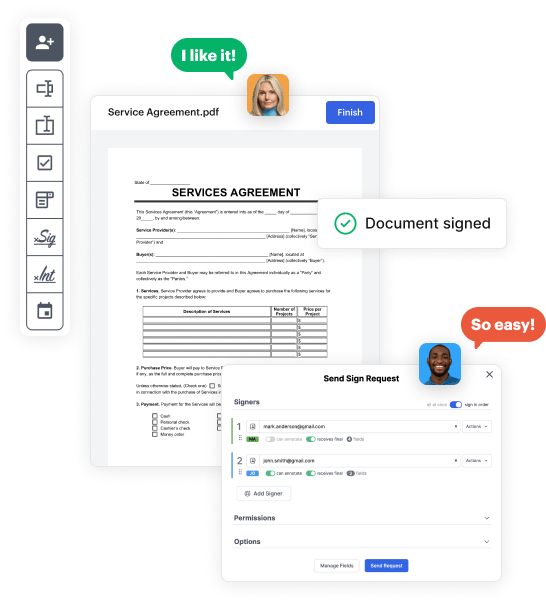

First, log in to your DocHub account. If you don't have one, you can simply register for free.
Once logged in, navigate to your dashboard. This is your primary hub for all document-based operations.
In your dashboard, select New Document in the upper left corner. Select Create Blank Document to craft the Real Estate Transaction Legal Form from a blank slate.
Add numerous fields like text boxes, photos, signature fields, and other fields to your form and designate these fields to certain individuals as required.
Refine your form by including directions or any other necessary details utilizing the text option.
Attentively go over your created Real Estate Transaction Legal Form for any mistakes or required adjustments. Utilize DocHub's editing features to fine-tune your form.
After finalizing, save your copy. You can choose to retain it within DocHub, export it to various storage services, or forward it via a link or email.